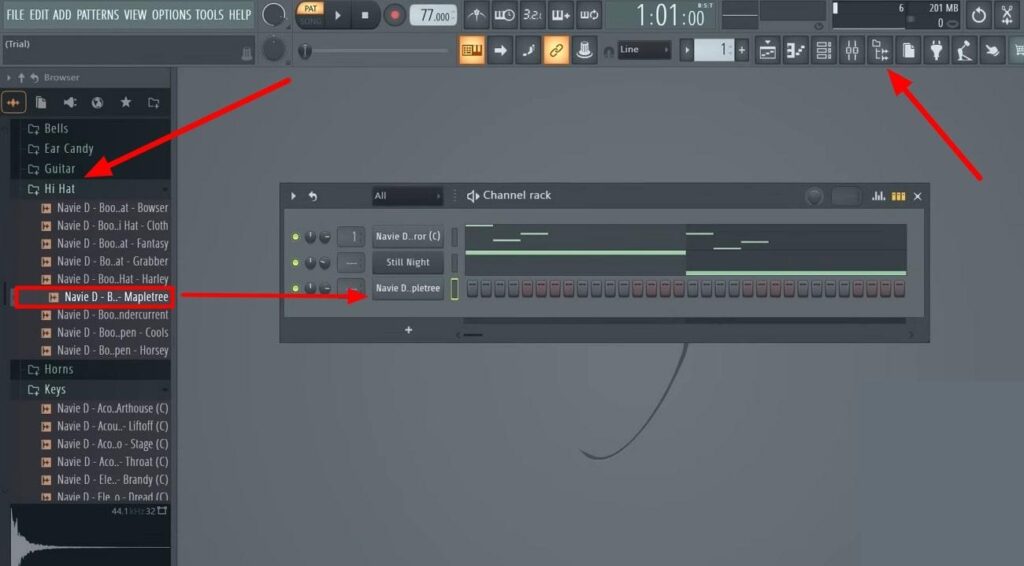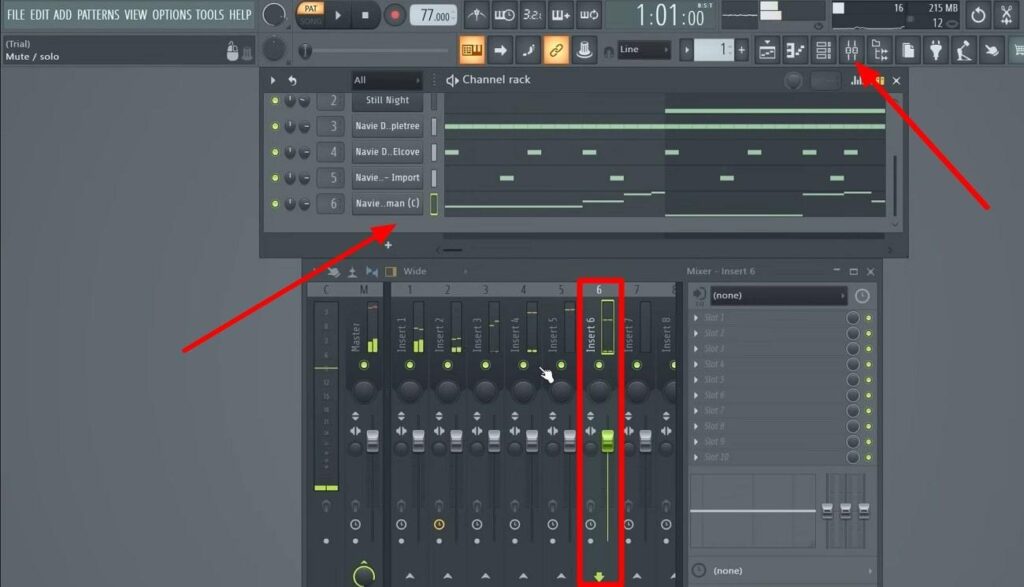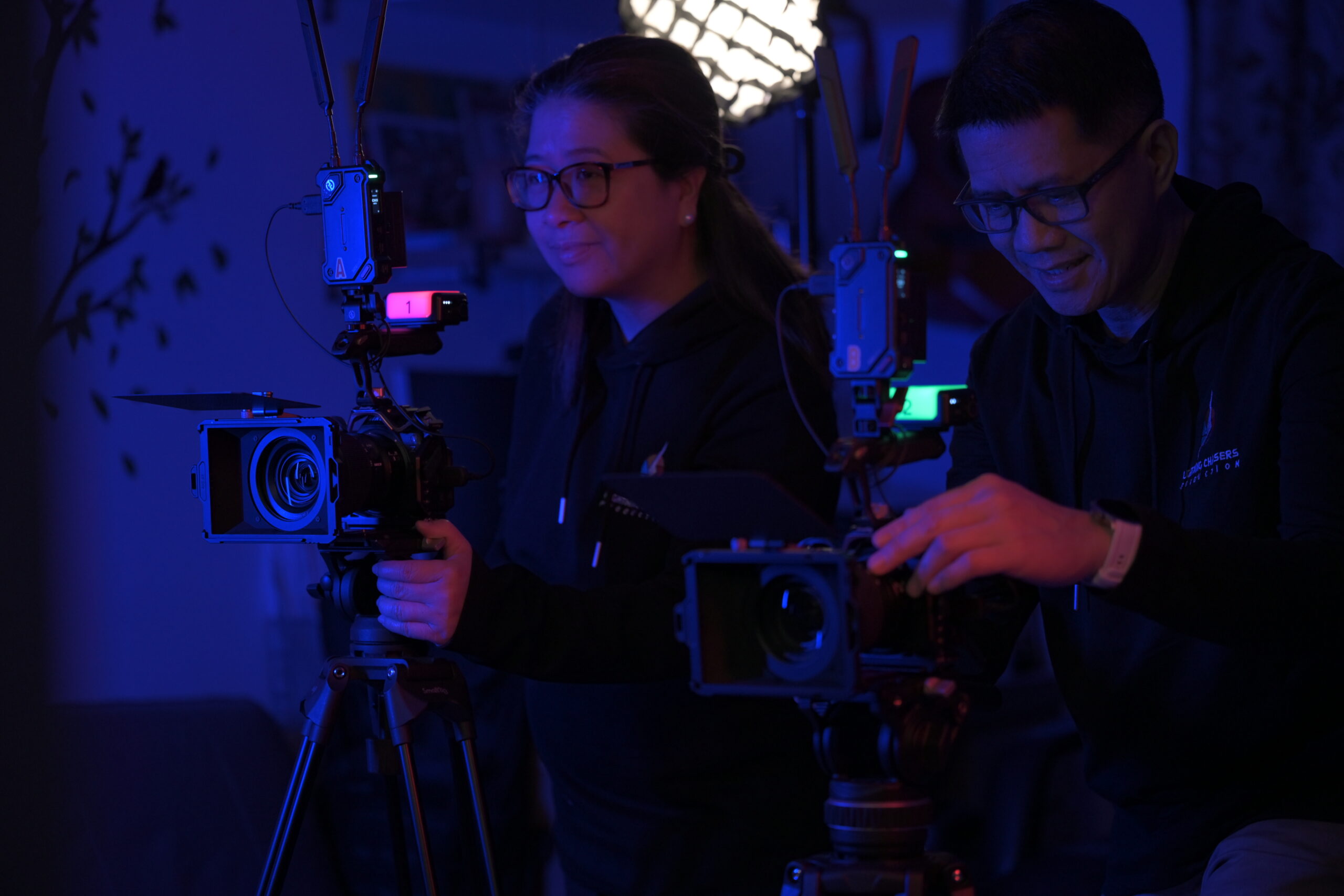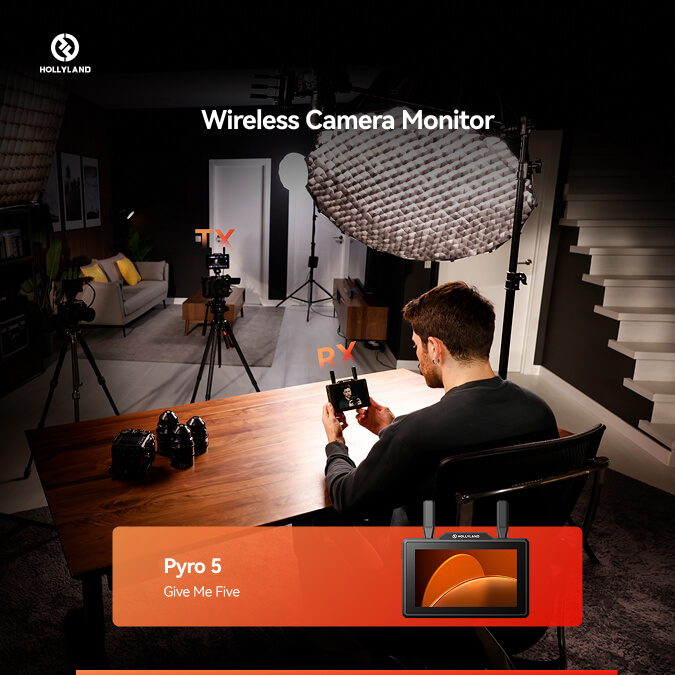Hip-hop is one of the fastest-growing genres of music, as youngsters can relate to these kinds of songs and beats. Seeing the recent popularity of this genre, many music producers are trying their luck in making this type of music. However, most of them are not familiar with the art of the beat production process, which results in them not being able to connect with the listeners.
Therefore, composers should learn the art of beat-making before they try to experiment with this genre. To make things easier for young beat producers, we will try to cover everything you need to know about beat production in detail.
Part 1. What is Beat Music?
When talking in music terms, beats are rhythmic patterns that keep the listeners engaged with repetitive music patterns. Music producers can create this sense of flow using different instruments, including drum and bass. Many online and offline tools are also available to help young producers produce beats without any instrument. Such engaging beats are integral to popular music genres, such as hip-hop and rock.
If we talk about the history of such music production, beat music originated in Liverpool during the late 1950s era. Later, it became an integral part of hip-hop culture in the United States to take the rap genre to new heights. Nowadays, everyone is trying their luck in beat music production to connect with young listeners.
Part 2. Different Types of Music Beats Every Producer Should Know
Composers can play around with different types of beats to make suitable compositions matching the lyrics of the song. Whether you want to make a melodic or drill beat, the choice is up to you, as you can play with the rhythm to produce your desired sound.
We can categorize beats based on two parameters, including emphasis and genre. Let’s analyze the types of beats included in both these categories to expand our knowledge about beat production.
1. Beat by Emphasis
While considering emphasis parameters, we can decide beats in the pattern in which they play. You can categorize each of the following beats according to where the emphasis falls within the duration of the beat.
- Downbeat: A good music producer will know that this is the strongest type of beat acting as the foundation of the composition. Moreover, this beat carries the most weight rhythmically to compel listeners to tap their feet.
- Upbeat: These are the in-between beats that fill the space between downbeats with less emphasis. In addition, such beats contribute to the flow of the rhythm to provide a sense of anticipation towards the next strong beat.
- Backbeat: Such beats are based on the drumming style where the emphasis lies on the 2nd and 4th beats of a 4/4 measure. Musicians producing compositions for funk and rock genres can create a propelling force behind the melody with this kind of strong beat.
2. Beat by Genre
These are common categorizations of beats that even beginner music producers should know. Such beat types depend on the emotions and style of music a producer wants to convey to his listeners. Go through all these beats belonging to different genres to improve your beat production skills:
- Trap: When composing such beats, producers utilize slower tempos to give a touch of swag to the produced music. You can identify such types of beats by the hi-hat playing on every 8th note and triplets played on the snare drum. Famous artists like Travis Scott use trap beats to deliver stylized music to their listeners.
- Drill: With high tempos that reach around 140 bpm, this type of beat is utilized by rappers with fast delivery styles. Such beats will have various elements, including kick drum, snare, and hi-hats, to create an engaging rhythm. All in all, these beats are composed to be intense and raw to deliver a sense of energy to the listeners.
- Drum and Bass: These beats reach up to 170 bpm tempo, which is even faster than the drill beats. Complex drum patterns make this type of beat distinct from other basic beats used in the hip-hop industry. You can listen to artists such as Pendulum and Noisia if you want to experience such beats.
- Boom Bap: The majority of hip-hop producers consider this beat as the most authentic beat of this genre. Using slow tempos with a prominent kick drum, this beat does an excellent job of captivating listeners. Some of the most popular artists, like Kanye West, use this beat to make groovy songs.
Part 3. What are the Instruments Needed to Make a Good Beat
Now, you have a good knowledge of the different types of beats a producer can compose. Using this information, you must have selected the beat you want to produce to make a compelling song for listeners.
However, before you start the production, you need to know about the instrument you will need to optimize this process. Let’s discuss all the hardware and software tools a beginner will require to start the beat production.
- Computer, Laptop, Smartphones, or iPad
Music composers will need a device with enough processing power to handle the beat production process. Moreover, the chosen device should have ample storage space to save your music files and software without any problem. You can also use portable devices, including iPads or smartphones, to create beats anywhere you want whenever an innovative idea strikes your mind.

- Digital Audio Workstation (DAW)
When you move to the professional level, you will need an audio workstation to produce quality beats. With the help of DAW, you can edit and mix beats with complete artistic freedom. Moreover, such workstations will work as your virtual studio, giving you a feel of multi-million-dollar professional production studios. There are many DAW software available, including FL Studio, that can help young producers start their journey.

- Audio Interface
Professional beat producers should also get their hands on an audio interface to connect different sound sources to their computers. This tool is essential for those music producers who use live musical instruments, such as drums and guitars, in their beat production process. You can purchase a high-quality audio interface from MBOX Studio to experiment with your beats.

- Loop and Sample Library
While listening to some of the best-produced beats, you can hear snippets of pre-recorded audio modulated in the desired way. Music composers should have a sample and loop library to ease out the beat production process with pre-recorded sounds. They also utilize the samples of different instruments, such as drums or piano, to create a rhythm in the track. Young artists can visit the Soundation website to get free loops and samples stored in an online library.

- MIDI Controllers
Using this physical device, composers can compose and edit the beats with an improved workflow compared to a mouse or keyboard. With specialized buttons and adjustment knobs, you will get a feel of playing an actual musical instrument. New music composers will not need these expensive controllers to start the beat production process. However, we recommend professionals buy this equipment to improve the way they compose beats.

Part 4. How to Produce Beat Offline with Advanced DAW?
Composers who want to produce beats at a professional level should know how to utilize DAWs for the beat production process. These advanced tools, including FL Studio, will give you artistic independence to customize each element of the beat. Music producers wanting to learn the functionality of this audio workstation can take help from the instructions we are going to explain below:
Step 1. Start the beat production process by launching FL Studio on your device. Now, hit the “Browse” icon on the right of your screen to access all the sounds and samples you can utilize to compose an engaging beat.

Step 2. Moving forward, access the “Channel Rack” dialog box by pressing the relevant icon on the top toolbar. Next, import the selected sound sample from the “Browser” sidebar to add it to the “Channel Rack” dialog box to customize it for beat production.

Step 3. Following that, you need to set the beat per minute value according to the type of beat you want to produce. Then, press the “Play” icon to listen to the tempo of the beat before applying further optimization steps.

Step 4. Upon setting the tempo of the beat, press the “Piano” icon on the top toolbar to add new elements to this sound sample. Afterward, go to the “Browser” sidebar and select the “Keys” samples to add these elements to the piano roll one by one.

Step 5. After adding keys to your beat, you can proceed to insert the drum rolls to give an energetic feel. To do this, press the “Browser” icon from the top toolbar and access the “Hi-Hat” samples to add the desired drum rolls to the “Channel Rack” dialog box.

Step 6. Once you have added all your favorite elements to the beat, press the “Mixer” icon to start blending these elements. After selecting the element from the “Channel Rack,” you can mix and edit its sound to blend it with the rest of the beat.

Part 5. How to Compose Music Beat Online?
Young beat producers can try out online tools to test their beat-making skills before buying expensive audio workstations. For this purpose, they can benefit from free trials of online tools such as Soundation and Boomy. Go through the simple steps given below to try out different elements for an optimized beat production process:
Step 1. First, you need to visit the official website of Soundation and log in with your Google account to access its dashboard. Afterward, click the “Create New Project” button to enter the beat production window of this tool.

Step 2. Upon entering this window, hit the “Make a Beat” icon in the toolbar at the bottom of the screen. Doing so will help you access the “Beat” samples in the “Sound Library” window. Now, drag and drop your favorite sample into the editing interface to start the beat production process.

Step 3. Moving forward, access the “Loops and Samples” options from the “Sound Library” window to choose your desired elements. Next, add these samples one by one to your beat in the desired location to create a groovy output.

Step 4. Finally, add the suitable instruments to your beat from the “Instrument Presets” window for a more melodic beat. Once all the elements are added to the beat, hit the “Play” button to preview the output before pressing the “Share” button.

Part 6. How to Create Beats Anywhere Using Smartphones?
You may also want to know about the way to produce beats when you are away from your workstation. Smartphone apps, such as Groovepad, can help you in this regard by allowing you to produce beats in the simplest manner. The following steps will help you learn how to add different elements to the beat using a mobile application:
Step 1. Begin by launching the Groovepad application on your smartphone for beat production. Upon accessing its main interface, hit the “Record” button to start adding musical elements to your beat.

Step 2. Once the recording is started, tap the desired elements at regular intervals to compose a groovy beat. For example, you can press the “Beat” option from the start to let it run throughout the recording session. Then, you can add elements, such as “Bass” and “Synth,” to play around with the beat.

Step 3. Now, switch to the “Side B” tab to access more instruments and elements to your beat. Here, we will add the “Piano” and “Flute” instruments to make our beat more melodic.

Step 4. After creating the beat of your desired length, hit the “Stop” button to finalize your produced output. Now, enter the name of the beat in the newly appeared text box and press the “Save” button to store this groovy beat on your device.

Part 7. Helpful Tips to Make a Good Beat
Upon getting the know-how of these general methods for beat production, let’s talk about some significant points you need to follow to get good at this art. You can follow these advanced tips explained below to master the art of beat composition:
- Learn Basics of Music Theory: Before you get into the field of beat production, you should have a proper understanding of music theory to progress professionally. Doing so will help you understand the scales and chord progressions, which will assist you in crafting harmonic beats.
- Experiment with Your Style: Hip-hop and rock are the music genres that are perfect for experimental music producers. So, you need to play around with different samples and loops to get the perfect output.
- Listen to the Work of Experienced Producers: We also recommend that you actively listen to the producers who have made their name in the industry. By listening to the masters of the art, you can pick up new techniques to blend in your sound.
- Practice Beat Arrangement: Once you become an expert at choosing suitable elements for your beat, you need to keep practicing arranging these elements to compose a cohesive output. For this purpose, study how to divide a beat into an introduction, verse, and outro to give space to the rapper or singer to do their magic.
Conclusion
Throughout this article, we have introduced you to the basic components of beat production to help you start your career as a composer. In addition, you now know different methods to produce beats on your desktop and mobile devices. Utilizing all the knowledge gathered through this article, budding beat producers can create different styles of beats to make their name in the industry.
Effective communication behind the scenes is essential when diving into beat music production, particularly if you’re collaborating or filming sessions. Consider using a wireless intercom system; it’s ideal for maintaining seamless coordination during your music production setup, helping you stay focused on creating great beats.
Best Seller
Sale

Hollyland Solidcom SE – ENC Noise Cancellation Wireless Intercom
- Full-duplex wireless intercom with dual-mic ENC noise cancellation.
- Stable, expandable 1100ft (350m) wireless range in 2.4GHz with auto frequency-hopping.
- Clear audio (70dB SNR) and water/wind resistant design for difficult environments.
- Lightweight, comfortable single-ear headset, easy mute/talk controls via mic boom.
- 12-hour battery life (replaceable), supports USB-C charging for minimal downtime.
- Ideal for efficient team communication in TV/film productions and outdoor activities.
$229
$329
FAQs Related to Beats
Q1. Can I utilize a beat free of cost?
Yes, there are many beat producers that upload free beats on YouTube and other websites to let you use them for free. However, they give you permission to utilize these beats for non-profit and personal purposes. Therefore, you cannot benefit from these free beats to produce commercial tracks to gain profits.
Q2. Which music producers can inspire youngsters with their beats?
Young beat producers can take inspiration from the following artists who have made their name in this industry with their hard work and talent.
- Metro Boomin
- Kanye West
- Dr. Dre
- Jay-Z
- The Alchemist
Q3. Where can I find free music beats?
Many platforms offer free beats for rappers and singers to help them get good at their art. You can simply search for the free beats on YouTube or SoundCloud on your device. Moreover, you have the option to go to websites, such as BeatStars, to find free and paid beats.
Q4. What happens if I utilize a copyrighted beat for commercial use?
When you utilize such beats for commercial use, the original artists have the right to take down your song. They also have the right to file a copyright infringement complaint against you and demand for compensation. Furthermore, if he allows you to use the beat, you have to give him the credits and share the royalties.































.png)





